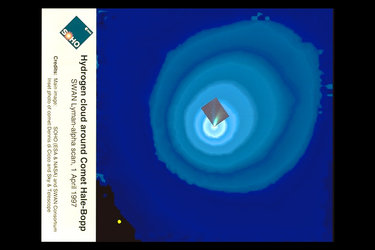Accept all cookies Accept only essential cookies See our Cookie Notice

About ESA
The European Space Agency (ESA) is Europe’s gateway to space. Its mission is to shape the development of Europe’s space capability and ensure that investment in space continues to deliver benefits to the citizens of Europe and the world.
Highlights
ESA - United space in Europe
This is ESA ESA facts Member States & Cooperating States Funding Director General Top management For Member State Delegations European vision European Space Policy ESA & EU Space Councils Responsibility & Sustainability Annual Report Calendar of meetings Corporate newsEstablishments & sites
ESA Headquarters ESA ESTEC ESA ESOC ESA ESRIN ESA EAC ESA ESAC Europe's Spaceport ESA ESEC ESA ECSAT Brussels Office Washington OfficeWorking with ESA
Business with ESA ESA Commercialisation Gateway Law at ESA Careers Cyber resilience at ESA IT at ESA Newsroom Partnerships Merchandising Licence Education Open Space Innovation Platform Integrity and Reporting Administrative Tribunal Health and SafetyMore about ESA
History ESA Historical Archives Exhibitions Publications Art & Culture ESA Merchandise Kids Diversity ESA Brand Centre ESA ChampionsLatest
Space in Member States
Find out more about space activities in our 23 Member States, and understand how ESA works together with their national agencies, institutions and organisations.
Science & Exploration
Exploring our Solar System and unlocking the secrets of the Universe
Go to topicAstronauts
Missions
Juice Euclid Webb Solar Orbiter BepiColombo Gaia ExoMars Cheops Exoplanet missions More missionsActivities
International Space Station Orion service module Gateway Concordia Caves & Pangaea BenefitsLatest
Space Safety
Protecting life and infrastructure on Earth and in orbit
Go to topicAsteroids
Asteroids and Planetary Defence Asteroid danger explained Flyeye telescope: asteroid detection Hera mission: asteroid deflection Near-Earth Object Coordination CentreSpace junk
About space debris Space debris by the numbers Space Environment Report In space refuelling, refurbishing and removingSafety from space
Clean Space ecodesign Zero Debris Technologies Space for Earth Supporting Sustainable DevelopmentLatest
Applications
Using space to benefit citizens and meet future challenges on Earth
Go to topicObserving the Earth
Observing the Earth Future EO Copernicus Meteorology Space for our climate Satellite missionsCommercialisation
ESA Commercialisation Gateway Open Space Innovation Platform Business Incubation ESA Space SolutionsLatest
Enabling & Support
Making space accessible and developing the technologies for the future
Go to topicBuilding missions
Space Engineering and Technology Test centre Laboratories Concurrent Design Facility Preparing for the future Shaping the Future Discovery and Preparation Advanced Concepts TeamSpace transportation
Space Transportation Ariane Vega Space Rider Future space transportation Boost! Europe's Spaceport Launches from Europe's Spaceport from 2012Latest

Soho charts Sun's temperature variations
Thank you for liking
You have already liked this page, you can only like it once!
Concentric layers in a cutaway image show oddities in the speed of sound in the deep interior of the Sun, as gauged by the MDI/SOI and VIRGO instruments on ESA's Soho spacecraft. The US MDI/SOI measures vertical motions due to sound waved reverberating through the Sun, at a million points on the visible surface. VIRGO, the responsibility of a Swiss-led team, detects the solar oscillations by rhythmic variations in the Sun's brightness. In red-coloured layers, sound travels faster than predicted by the theories, implying that the temperature is higher than expected. The conspicuous red layer, about a third of the way down from the surface to the Sun's centre, suggests unexpectedly high temperatures at the transition zone between the turbulent outer region (convection zone) and the more stable region inside it (radiation zone). In this transition region, MDI/SOI has also measured a rapid change in the speed of rotation around the Sun's axis (not depicted here). Between the faster-turning outer zone and the slower interior, this shear layer may generate the magnetism that battles with the gas in the outer layer and causes frenzied activity at the visible surface - where MDI/SOI also charts sunspots (left). Resulting storms in the solar atmosphere can affect the Earth. In blue-coloured layers, the sound speed is lower than expected, and temperatures are probably lower too. Most notable in this respect is the very core of the Sun, where VIRGO suggests that the temperature may be 0.1 percent cooler that the expected 15 million degrees C. Although the discrepancy seems small, it implies that the thermonuclear reactions in the core that power the Sun could be underperforming at present. If confirmed by prolonged observations by Soho, the cool core may leave theorists wondering if the Sun varies its power-generation over long periods. [Image Date: 1998/04] [98.04.017-001]
-
CREDIT
Soho (ESA & NASA), MDI/SOI and VIRGO data imaged by A. Kosovichev, Standford University -
LICENCE
ESA Standard Licence

Soho: a wind-gauge for the interstellar breeze

Soho observes the Sun's corona

Soho reveals the Sun's internal motions

Soho's Atlas-Centaur ready for launch















 Germany
Germany
 Austria
Austria
 Belgium
Belgium
 Denmark
Denmark
 Spain
Spain
 Estonia
Estonia
 Finland
Finland
 France
France
 Greece
Greece
 Hungary
Hungary
 Ireland
Ireland
 Italy
Italy
 Luxembourg
Luxembourg
 Norway
Norway
 The Netherlands
The Netherlands
 Poland
Poland
 Portugal
Portugal
 Czechia
Czechia
 Romania
Romania
 United Kingdom
United Kingdom
 Slovenia
Slovenia
 Sweden
Sweden
 Switzerland
Switzerland
























